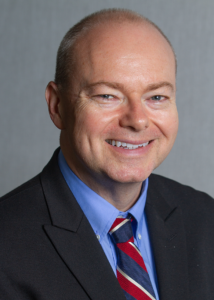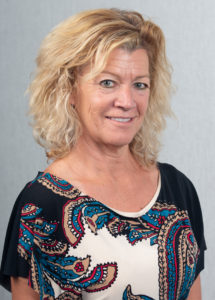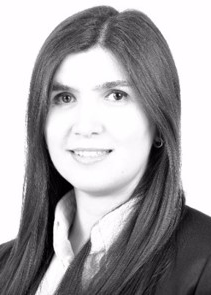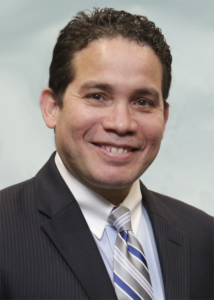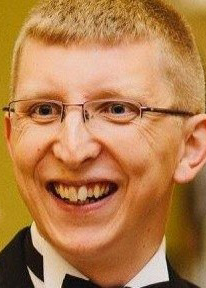Sister organizations SCAF and ICEAA have been longtime collaborators for information and events regarding analysis, forecasting, estimating, and all things related to the cost professions. Due to the worldwide travel restrictions in place, SCAF and ICEAA have joined together to present a series of webinars in lieu of an in-person collaborative event for 2020. The sessions below feature two presentations, approximately 30 minutes each, that offer perspectives from the US and the UK on topics of the day.
17 November 2020: Cost and Data Issues facing Today’s Cybersecurity Analysts by Bob Hunt
 Cost and Data Issues facing Today’s Cybersecurity Analysts
Cost and Data Issues facing Today’s Cybersecurity Analysts
Bob Hunt
Slides Download
Cybersecurity threats and counter measures are evolving at a rapid pace. Analysts need a solution for assessing a non-static situation. Many organizations are simply costing a proposed plan without a strategic or sustainment plan. Current studies imply that it is more costly to defend against a cybersecurity attack than to execute the attack. Studies also indicate that the typical security breach is not detected until about 200 days after the breach. Analysts need to understand the scope of cybersecurity. Is it physical, computer, hardware, people, policy, or all of the above? This presentation evaluates three approaches to a cybersecurity cost analysis. Thy three current approaches to costing cyber security are; economic/return on investment, industrial engineering/cost build up, and parametric. The strengths and weaknesses of each approach are discussed. Two emerging parametric techniques are discussed in this presentation. Data sources and data shortfalls are also discussed.
Bob Hunt has over 40 years of cost estimating and analysis experience. He received his Society for Cost Estiating and Analysis (SCA) Certification in 1991. He has served in senior technical and management positions at Dulos Incorporated (President), Galorath Federal Incorporated (President), Galorath Incorporated (Vice President for Services), CALIBRE Systems (Vice President), CALIBRE Services (President), SAIC (Vice President), the U.S. Army Cost and Economic Analysis Center (Chief of the Vehicles, Ammunition, and Electronics ICE Division, U.S. Army Deputy Directorate of Cost Analysis.
24 November 2020: Art of Judgement by Andy Nolan and The Quantitative Risk Management Imperative by Christian B. Smart
The Art of Judgement
Andy Nolan
Slides Download
Calibration Test
Uncertainty Quiz
Many of us rely on “expert judgement” when estimating, but the evidence is that it can be unreliable. Based on a study of 3760 guesses, we noticed that 70% of people tend to underestimate. A new study in 2020 of 7400 guesses, showed that 69% of people tend to quote a narrow min-max range when guessing a 3-point estimate. When using judgement, most of us are too low and too precise, we are precisely wrong! This research showed that within 30 minutes, 60% of people could improve their judgement accuracy. It seems most people can quickly calibrate themselves, but not everyone. In 2018 we developed a quick and simple calibration test to determine if someone could reliably estimate. The trials spanned 578 people and several companies. It showed that we could reliably predict who, and when, we can trust a guess. The paper summarises four years of research, offers training methods and methods for how to enhance judgement accuracy. It also suggests that for some, they will need to rely on data rather than their judgements.
Andy Nolan joined Rolls-Royce in 1989 and spent 23 years in software development and project management. In this role, he developed some of the initial estimating tools, techniques and training now used across Rolls-Royce. Andy became a Six-Sigma Black Belt in 2007. Since 2012, Andy has been the Chief of Project Estimating, specialising in project development costs, resources, schedules and benefits. His role is to evaluate, develop and deploy capabilities for estimating across the business. Some of this work is now available in the public domain for which Andy has received recognition.
The Quantitative Risk Management Imperative
Christian B. Smart
Slides Download
Risk is an important consideration for all projects. However, as a society we are risk blind. When projects plan, they tend to look only at the best-case scenario. Risk is not just a nice to have, it is a critical ingredient in project success, and it needs to be analyzed quantitatively. The use of point estimates, averages, and qualitative methods all underestimate risk. The use of quantitative methods for risk analysis is well established. We discuss how to successfully implement them in the analysis of project risk.
Dr. Christian Smart (CCEA®) is the Chief Data Scientist with Galorath Federal. He previously served as the Director of Cost Analytics and Parametric Estimating for the Missile Defense Agency for several years. Dr. Smart has also worked as a support contractor for NASA. He received an Exceptional Public Service Medal from NASA and is a former ISPA Parametrician of the Year. Dr. Smart has BS degrees in mathematics and economics, and a PhD in Applied Mathematics.
1 December 2020: The Future of IT & Software Estimating by Carol Dekkers and An Ontology-based Cost Modelling Approach for High-Value Manufacturing by Dr Maryam Farsi
The Future of IT & Software Estimating
Carol Dekkers
Slides Download
Wouldn’t it be fun to have a crystal ball to predict the future of IT and software estimating? In this presentation, Carol Dekkers takes us on a roller coaster ride of prognostications based on where we’ve been, what’s going well today and what trends are on the horizon. Let’s have some fun connecting the dots between the world today and where we might end up in the future with ICEAA and IT and software estimating.
Carol Dekkers, PMP, CFPS (Fellow), P.Eng, CSM, is CEO of Quality Plus Technologies, Inc. and is the lead author of the forthcoming ICEAA Software Estimating Body of Knowledge (SCEBoK). She specializes in working with companies who want to succeed with software measurement and functional size measurement. She is a co-author of several textbooks (The IT Measurement Compendium: Estimating and Benchmarking Success with Functional Size Measurement; Program management toolkit for software and systems development; Practical Software Project Estimation; and others,) and is a frequent speaker worldwide on estimating, measurement, ISO standards, project management, communication and quality. Ms Dekkers is a Past-president and former Director of Communications and Marketing for the International Function Point Users Group (IFPUG). She is also a U.S. expert on the USNB delegation to ISO/IEC SC7 software engineering standards.
An Ontology-based Cost Modelling Approach for High-Value Manufacturing
Dr Maryam Farsi
Slides Download
In high-value manufacturing, the inadequacy of historical service data, and the high level of uncertainties around service cost in complex assets, make the identification of cost reduction opportunities challenging. These influencing factors also complicate the assessment of the impact of cost drivers on the total lifecycle cost. Addressing these challenges, this workshop presents an ontology-based cost model architecture with a simple data structure and minimum data requirement. Additionally, the impact of cost drivers on the total cost is evaluated and aims to examine the validity and applicability of the ontology and the cost model to different sectors and asset types.
Dr Maryam Farsi is a Lecturer in Through-life Engineering Optimisation at Cranfield University, School of Aerospace, Transport and Manufacturing. Dr Farsi gained her PhD in ‘Nonlinear Structural Mechanics’ from Imperial College London in 2014 and her MSc in ‘Civil Engineering Structures’ from City, University of London in 2010. Dr Farsi’s main research focus is on complex systems and system of systems simulation, modelling, optimisation, data analytics and data visualisation. This includes: Enterprise and supply chain simulation, optimisation and digital twin; Product and service contracts; Lifecycle cost modelling and analysis; and Risk and uncertainty quantification with over 15 research works.
8 December 2020: Empirical Effort and Schedule Models for Agile Development in the US DoD by Wilson Rosa and Splitting Water: A Cost-Benefit Analysis on the installation of an Electrolyser at a Hospital by Simon Porter
Empirical Effort and Schedule Models for Agile Development in the US DoD
Wilson Rosa
Slides Download
In the Department of Defense (DoD), mainstream agile estimation metrics (story points and user stories) are not available before contract award. This paper presents an effective approach for estimating Agile software effort and schedule using a size measure available before contract award. The analysis explores the effects of initial software requirements (functions and external interfaces), staffing, and domain on effort and schedule. The dataset contained 36 DoD agile software projects implemented from 2008 to 2019.
Dr. Rosa is the Assistant Director for IT at the DHS Cost Analysis Division. He has over 25 years of experience in government including C4ISR Branch Chief at Naval Center for Cost Analysis, Technical Advisor at Air Force Cost Analysis Agency, and Industrial Engineer at Department of Navy (NAVAIR and NAVSEA).
Splitting Water: A Cost-Benefit Analysis on the installation of an Electrolyser at a Hospital
Simon Porter
Slides Download
Following the governmental commitment of achieving net carbon zero by 2050, interest in the development of the hydrogen economy has increased. Hydrogen can be produced using electricity to split distilled water into hydrogen and oxygen gases, both of which can then be used for other purposes. This study analyses the costs and anticipated benefits of installing an on-site electrolyser at a hospital. This would provide hydrogen to run a Combined Heat & Power (CHP) plant to supply electricity and heat, along with oxygen for medical usage. A number of different options for meeting the brief are discussed, along with anticipation of future trends.
After studying Automotive Engineering at Loughborough University Simon has spent 10 years estimating event costs in the aerospace industry before moving to consulting in 2019. Since then he has been involved in a wide range of projects across all realms of defence.



